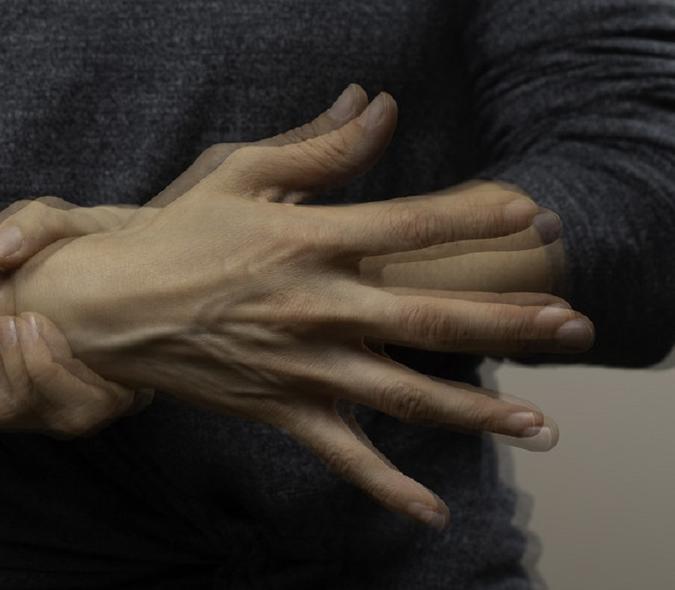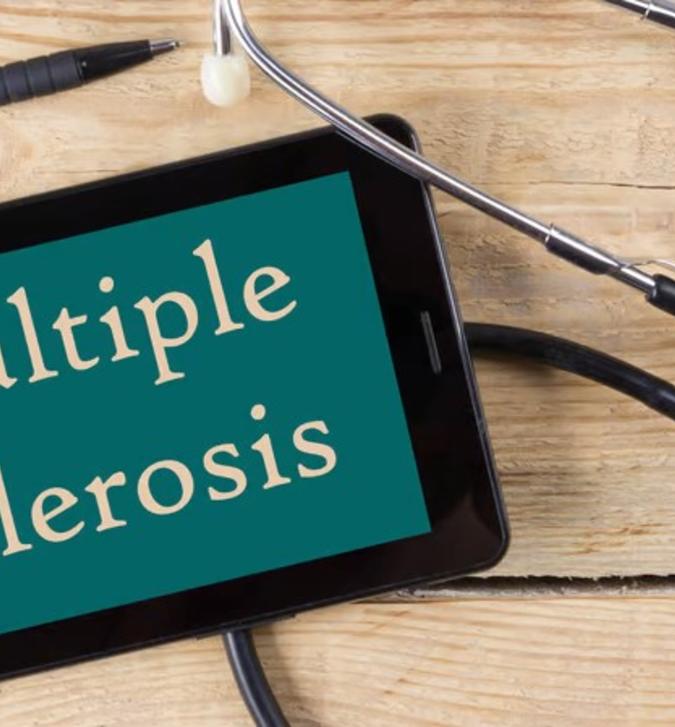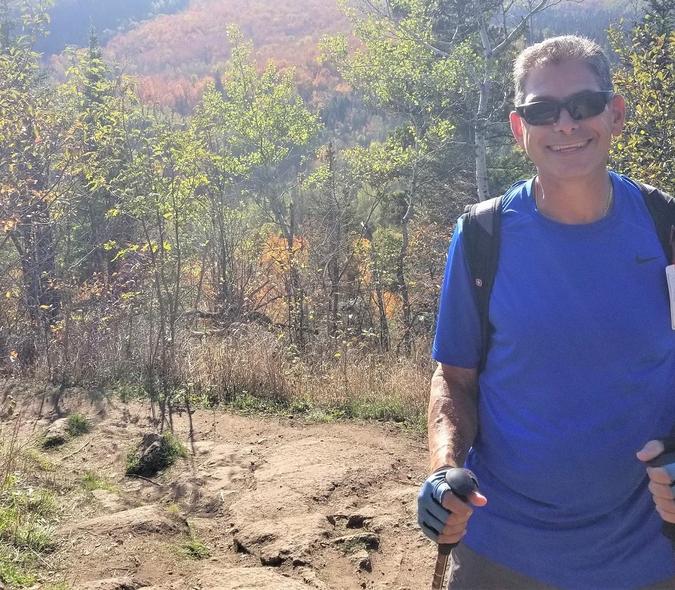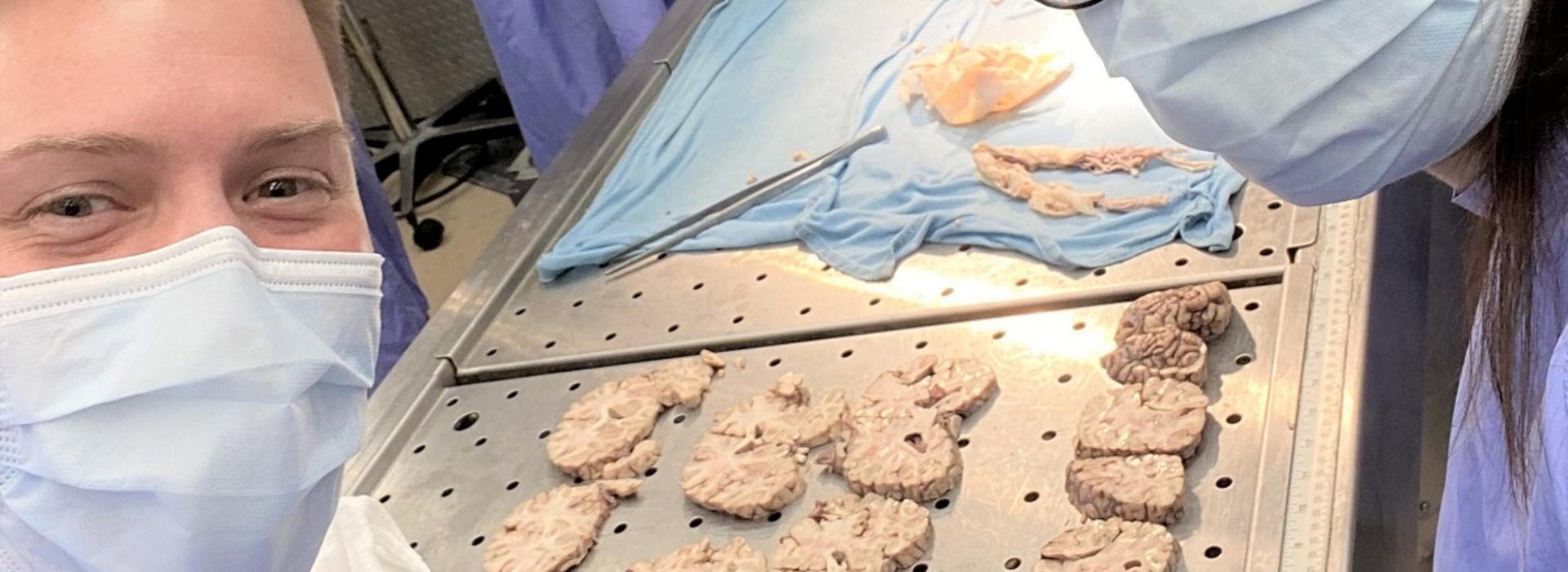
Fellowship in brain injury medicine provides additional training in critical area
Since 2013, the Rehabilitation Medicine Department has been specially training individuals to care for the various forms of brain trauma through its Brain Injury Medicine Fellowship. Michael Armstrong, MD, is the fellowship’s program director, and is joined by co-associate directors Diane Mortimer, MD, and Brionn Tonkin, MD. All are with the Minneapolis Veterans Administration Medical Center (VAMC) and have clinical affiliations at the U’s Department of Rehabilitation Medicine. Other faculty leaders for the fellowship include Michael Kasprzak, MD; at the U of M; and Min Jeong Park Graf, MBBS, at Hennepin Healthcare. The one-year fellowship covers conditions that range from concussions to very severe brain injuries.
The Brain Injury Medicine Fellowship originated at the Minneapolis VAMC. That makes a lot of sense to Mortimer because there are so many service members who have brain injuries and need specially trained people to care for them. The fellowship became a model for other institutions and in 2016, was among the first in the nation to be accredited. Currently, fellows spend six months at the Minneapolis VAMC, five months at Hennepin Healthcare, which is a Level 1 adult and pediatric Trauma Center; and a month at Gillette Children’s Hospital.

“It’s a really big health problem,” said Mortimer (pictured here). “There are 200,000 brain injuries in this country a year; 50,000 are considered severe and many more aren’t even counted.” Treating these injuries doesn’t require just one specialty, she noted. Physicians from neurosurgery, neurology, psychiatry, and physiatry often work together to create the treatment plans and interventions needed by these patients. And anyone from one of those four medical specialties can apply for the fellowship.
Every injury is unique
The challenge faced by physicians who care for these patients is that every brain injury is unique. “We’re trying to develop strategies that are tailored to each individual, their family, and their community,” said Mortimer. “Having that extra year of training in multiple settings across the continuum from concussion to severe brain injury and from acute to chronic injury, enables our fellows to help these patients regain function and improve their quality of life.”
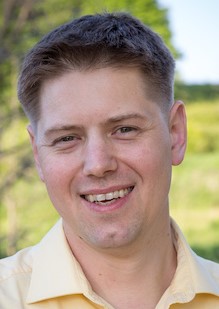
Current Brain Injury Medicine Fellow, Mathew Puderbaugh (pictured here), DO, noted that he’s treated many individuals who have been told there was nothing more that could be done for them. “Often, that is not the case,” he said. “People don’t realize what brain injury medicine is and the specialized training that we can bring to these patients. It’s key for people who feel they’re at the end of their rope.”
Both Mortimer and Puderbaugh, who are Physical Medicine & Rehabilitation (PM&R) physicians, believe they bring a unique perspective to their work with these patients. “We look at function, at what the patient wants to do and how we’re going to help them get there,” said Mortimer. “While we want to prevent things like seizures, we prescribe medications that won’t make them so tired to enable them to do what they need to do in the course of a day.”
Get them moving early
Puderbaugh adds that PM&R physicians are more focused on interventions that get the patient moving early in their treatment regimen. “If a patient says they’re too tired to participate in such interventions, my approach would be to understand how I can help motivate them,” he said. “Was it because of the time of day … were they up all night? How can I optimize a patient’s therapies so they can continue to progress?”
PM&R physicians are also used to working with multiple disciplines. “We’re comfortable collaborating and coordinating rather than being in charge,” said Mortimer. “Sometimes, we have to be really humble about the challenges that some of our patients face. We may not be able to completely fix things, but we can determine how to get them to the best place possible.”
Treat them as a whole person
Puderbaugh believes he has an additional advantage as an Osteopathic Physician. “We are taught that people are composed of a body, mind, and spirit and if a treatment affects one aspect of their being, it can affect them all,” he said. “I think that brings a more comprehensive viewpoint to a patient because we treat them as a whole person.”
When asked about the ideal candidate for the fellowship, Mortimer said that from a clinical perspective, they must be able to do an excellent patient assessment, and be able to design and implement dynamic, flexible treatment plans that meet the needs of the patient wherever they are along the continuum of recovery. “We need more fellowship-trained physicians to increase access to care, even if it’s just an individual willing to share information with other providers,” she said.
Brain injury research
Brain Injury Medicine Fellows are also required to complete a research project (or projects) during their fellowship. Puderbaugh is looking at doing gait analysis in Parkinson’s patients at the VAMC through the Big and Loud Program, an evidence-based exercise regimen that works to improve mobility, balance, endurance, and strength. “I would also like to look into emergency room concussion screening to see if there are predictors that indicate when a patient might develop persistent concussive symptoms,” he said.
The ultimate goal of the fellowship is to train people to take the helm and provide care for these complicated patients and their families. “We also want to get the word out about prevention to communities and the fact that function can be optimized even though these patients are in a pretty tough situation,” noted Mortimer.
Training others
Puderbaugh has talked to patients about how to take care of their brain and either prevent further injury or prevent the injury in the first place. “I’ve talked about seatbelt and helmet safety and understanding the risks associated with playing sports,” he said. “I’m also a Flight Surgeon with the Minnesota Air National Guard and have trained our medics about how to recognize, treat, and prevent traumatic brain injury.”
So far, the experience has been incredibly positive for Puderbaugh. “I’ve had some great opportunities to care for patients with several different types of brain injury across the spectrum, from prevention to rehabilitation, from people who have had brain cancers to traumatic events,” he said. “It’s been a great adventure.”
